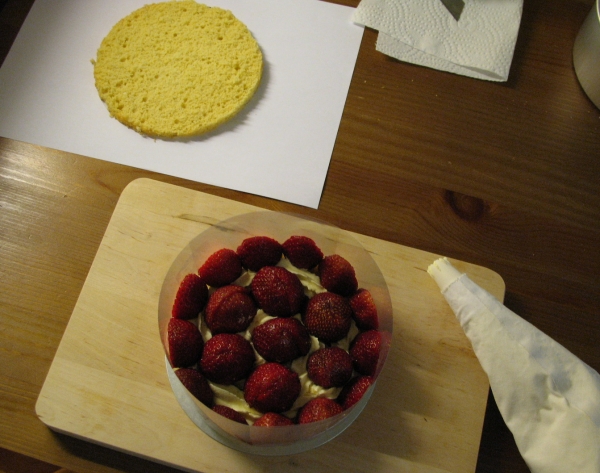There are a couple of things you can do with stale bread. Loaves that are past their prime can still be enjoyed for toast or paninis. Dried slices of lighter bread make for awesome croûtons. Not too spoilt breadcrumbs go well in stuffings or even in biscottis. Sourdough leavened pain de campagne is an awesome choice for putting in fishcakes. If you're really adventurous, hearty rye loaves mixed with rye starter, molasses, water and raisins can be made into kvas. If you're, as me, not that adventurous yet, you can slice stale rye bread, toast it until it's dry and dark (but not carbon), and put it into a new loaf of bread. If all else fails, stale bread is good bird fodder ;)
I recently made a boule of Hamelman's black bread - a 60/40 sourdough rye bread, where stale bread is mixed with ground coffee, vegetable oil and hot water. I mixed the soaker at same time I set the sourdough, and the overnight soak turned the mix into a (not very appealing) dark water slurry. I heated the soaker slightly to get the right DDT, and mixed the dough:

I used bread flour instead of Hamelman's suggestion of high-gluten flour, so the dough came together after approximately 6 minutes in the mixer. By then it was well developed and pretty strong when I tugged at it.
Here's the fully proofed dough:

It has a lovely brown, almost chocolate-y colour to it, and a heady aroma of fermented rye flour and strong, black coffee. The aroma became even headier and more penetrating as the loaf baked:

The loaf weighs in at about 1 kg, so it baked for 45 minutes.

The loaf has a dark, crackly crust and an intense smell of dark coffee.

I really like it - the flavour is unlike any other rye sourdoughs I've made. There are no hints of sweetness to it (as there are no molasses or other sweeteners/colour agents in the dough), but rather a subtle roasted coffee flavour that fits brilliantly with the taste of a 60/40 rye. I didn't include any caraway seeds or other herbs or spices, but I would like to try some dark caraway seeds next time, since Hamelman suggests that these pair nicely with the flavour of this black bread.

Have a go at it! I think you'll enjoy it.
Added:

As you can see, whether it's a black bread or not is certainly debatable - at least compared to a fully fledged Pumpernickel. But it's still very dark in colour as compared to other 60% medium rye loaves.
PS: Any other tips for what to do with stale bread?
The first locally grown, fully ripe strawberries are filling up the shelves at the local grocery store. Earlier this week, I couldn't resist the tempting berries anymore and went a little over board. They're absolutely delicious - soft, juicy and sweet with an almost blood red colour. This was the perfect opportunity to have a go at the Fraisier - a French strawberry cake. Some of the prettiest Fraisiers I've seen on the net, are the ones at La Tartine Gourmande, Tartelette and at Foodbeam (everything they make are stunning, and their takes on the Fraisier are no exceptions). I was stoked to be able to have a crack at this myself.
The Fraisier is traditionally a genoise cake base split in two and soaked in Grand Marnier cake syrup. The two layers are sandwiching a stack of strawberries and heavenly crème mousseline (crème patissière mixed with softened butter to make a buttercream slightly lighter than a typical meringue-based buttercream), and topped with a thin layer of marzipan.
Here, I'm in the middle of assembly:

Some hulled strawberries are divided in two, and lined along the rim, while whole, hulled strawberries make up the interior. Crème mousseline is then piped over this, before the second genoise layer is pressed on top, to flush the cream. Top the second genoise layer with a thin layer of crème mousseline, before chilling the cake in the fridge to firm it up.
After being chilled, a thin coat of marzipan is put on top. Here's how it turned out with my rather sparse top decorations:

This cake is all about good summer vibes. It's filled with fresh strawberries, the luscious taste of vanilla and soft butter from the crème mousseline, backdropped with the smooth Grand Marnier syrup.

If you have even more strawberries lying around (as I did - as said, I went a bit overboard), they're great on a tart, resting on a pillow of crème chantilly folded into pastry cream:
